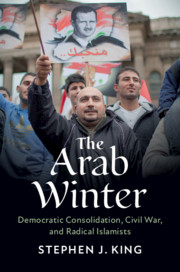1 - Tunisia
Published online by Cambridge University Press: 14 February 2020
Summary
Chapter 1 describes how Tunisia’s unique success has been based on comparative strength in national unity and state capacities along with an apolitical military, and Islamist and secular political parties exceptionally willing to work together to sustain a democratic bargain. Latent threats to Tunisia’s democracy remain in a security sector fighting reform, socioeconomic struggles, and the resurgence to power of pre–Arab Spring political and economic elites.
- Type
- Chapter
- Information
- The Arab WinterDemocratic Consolidation, Civil War, and Radical Islamists, pp. 30 - 95Publisher: Cambridge University PressPrint publication year: 2020



